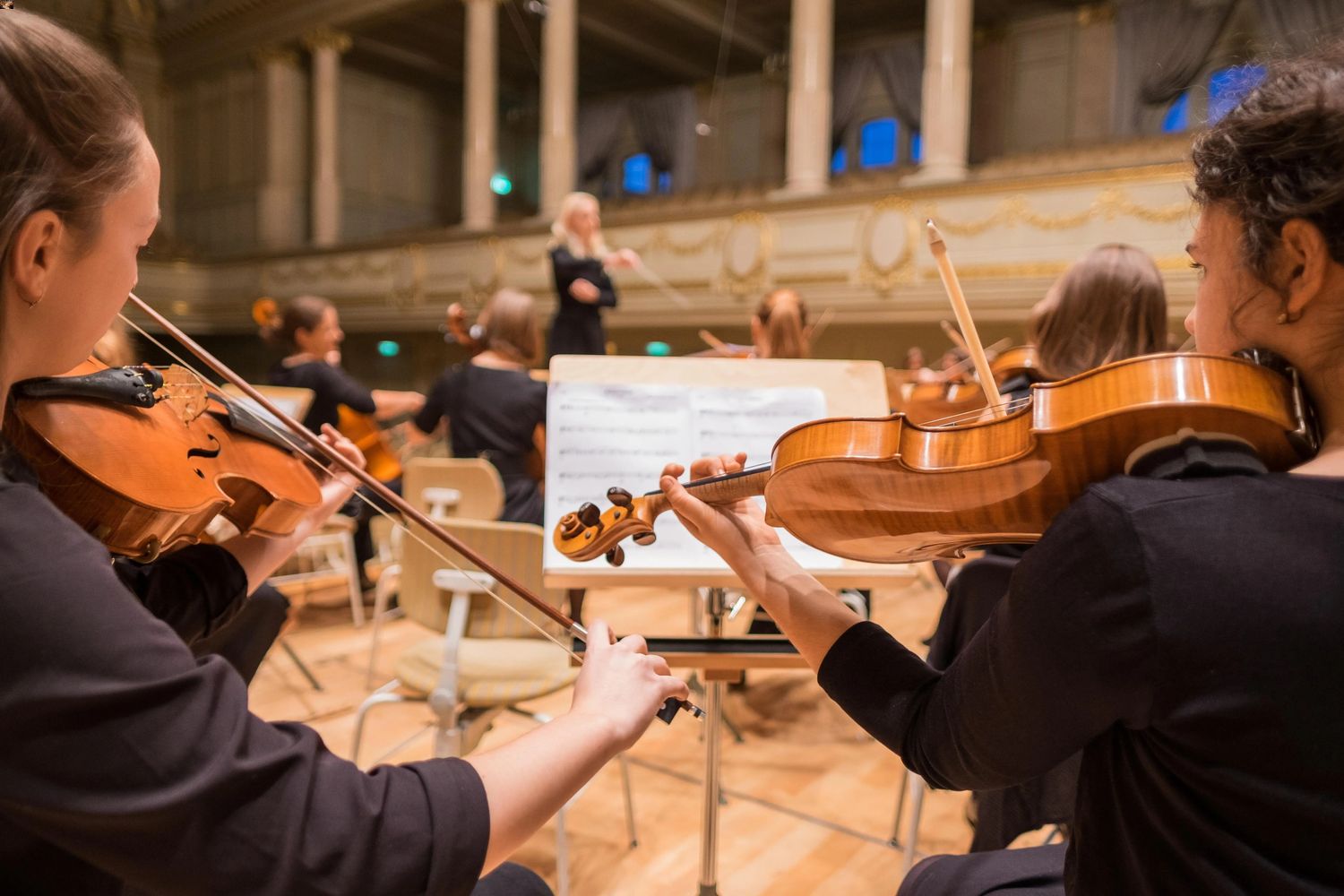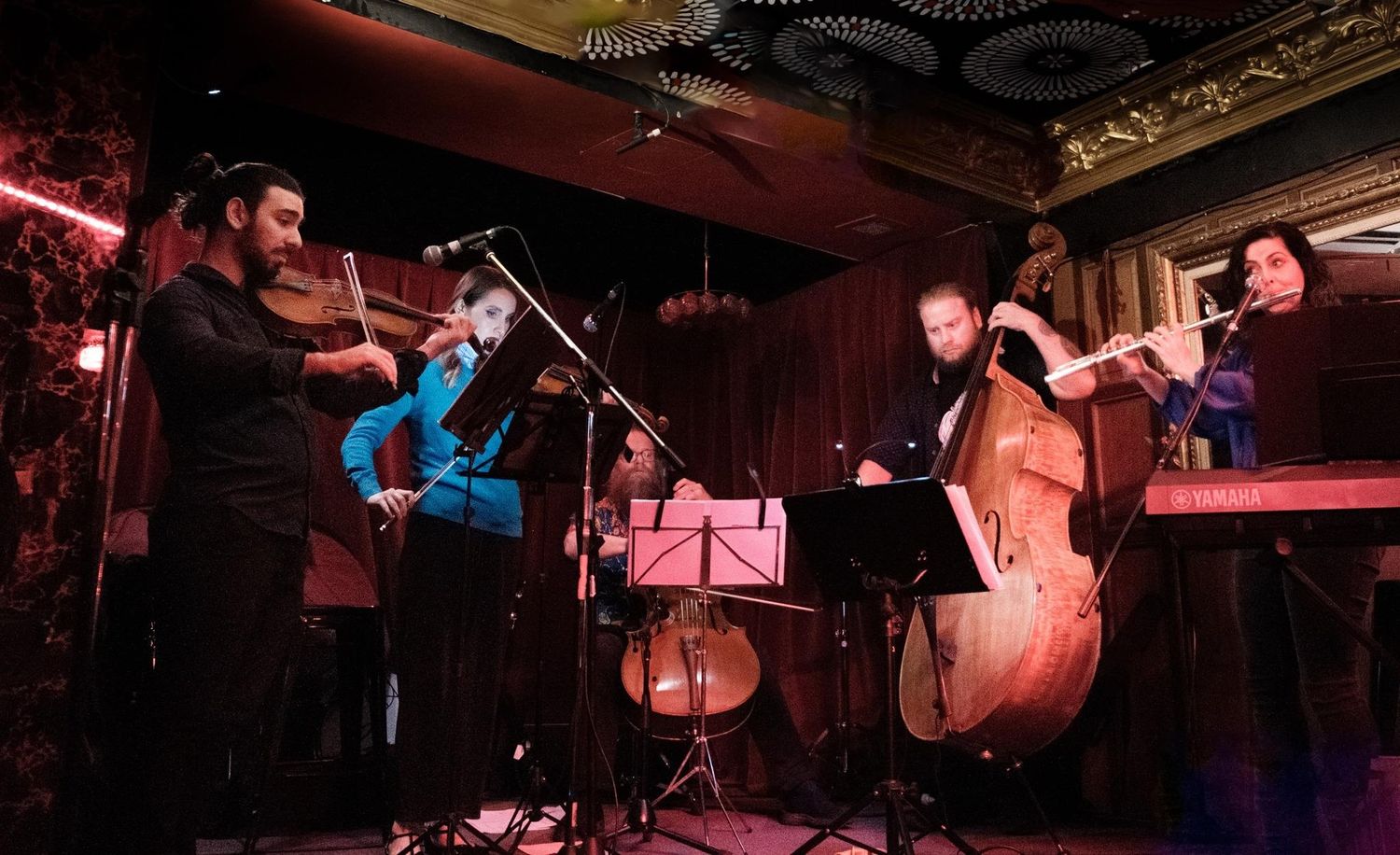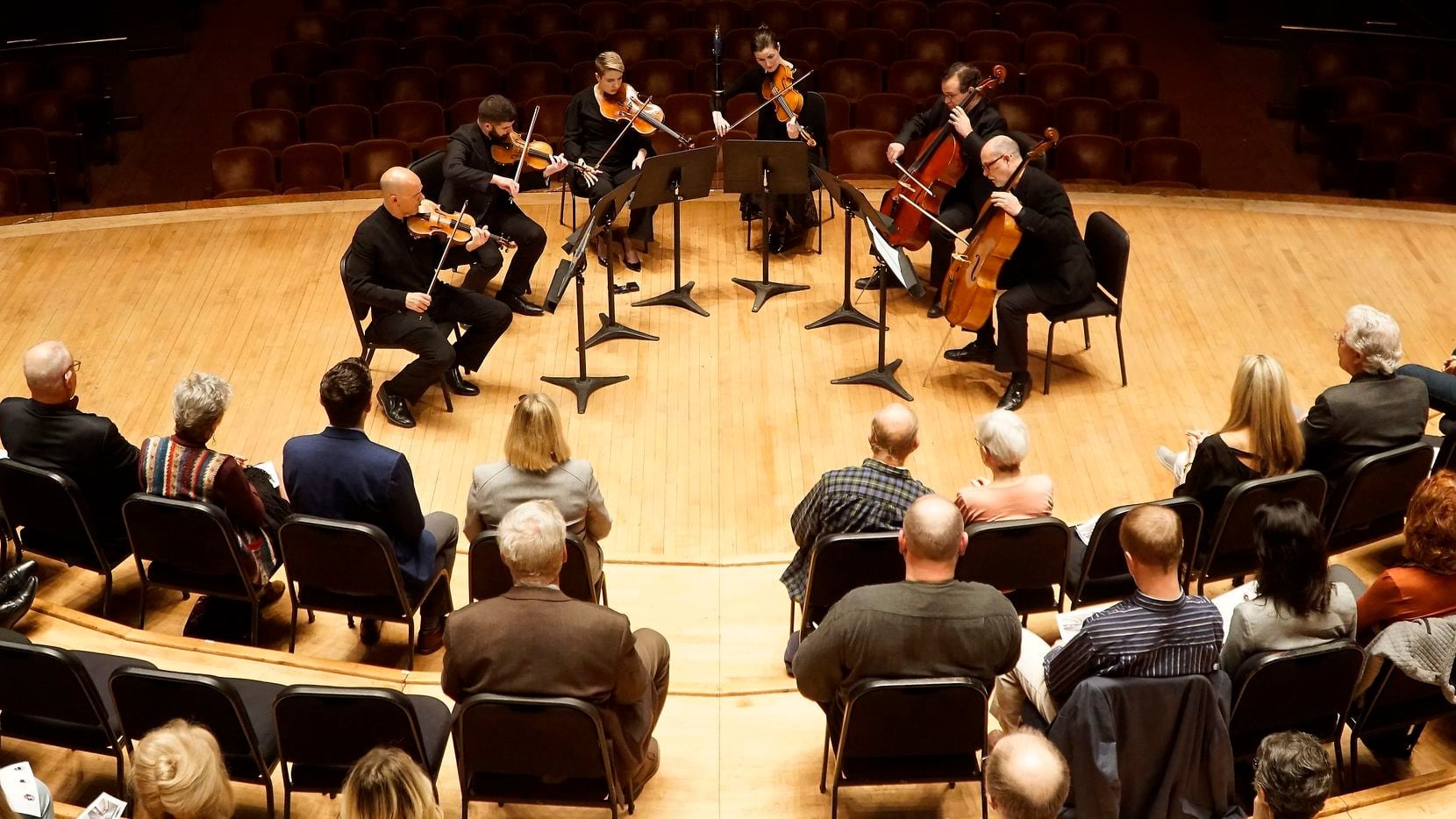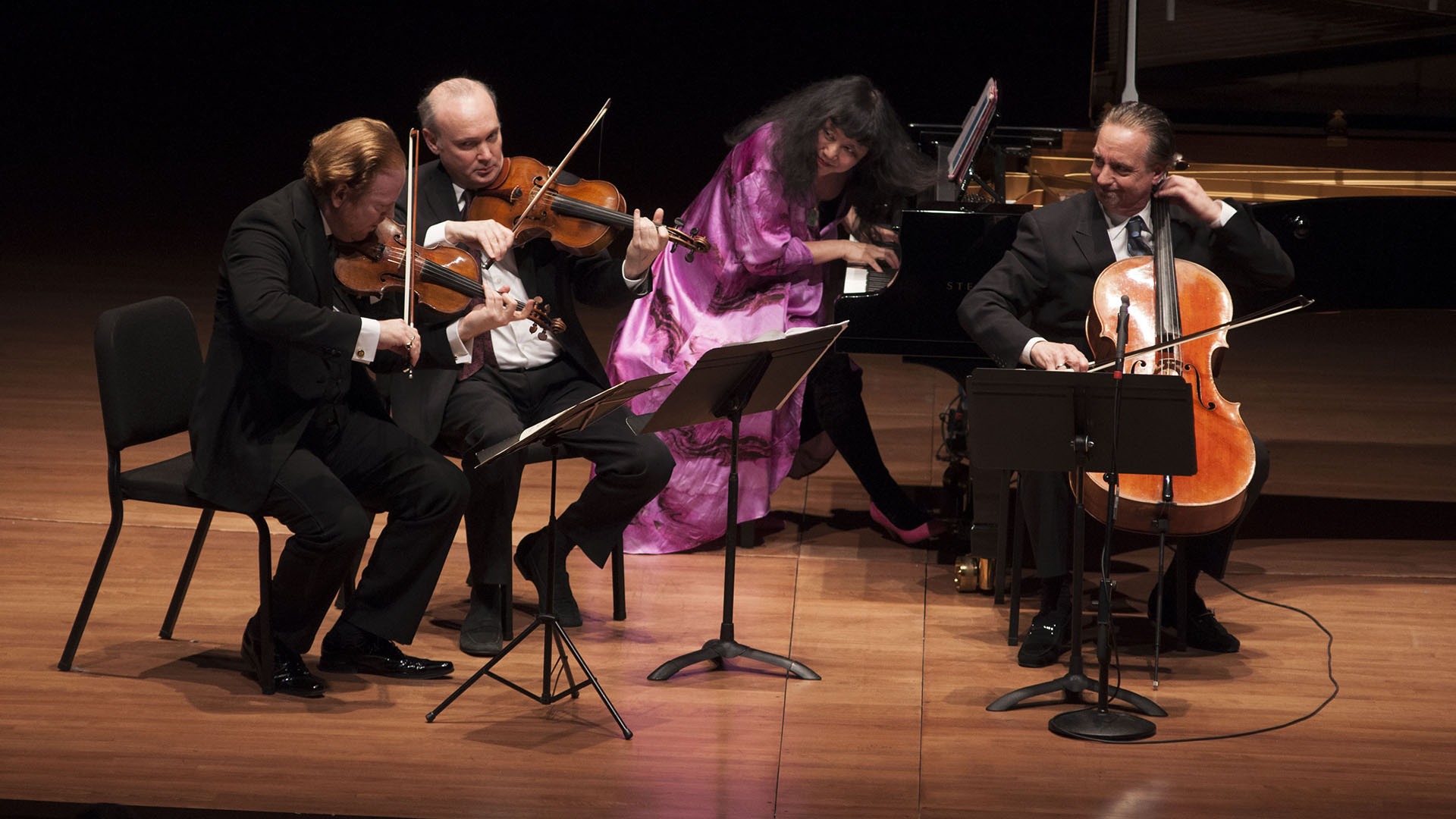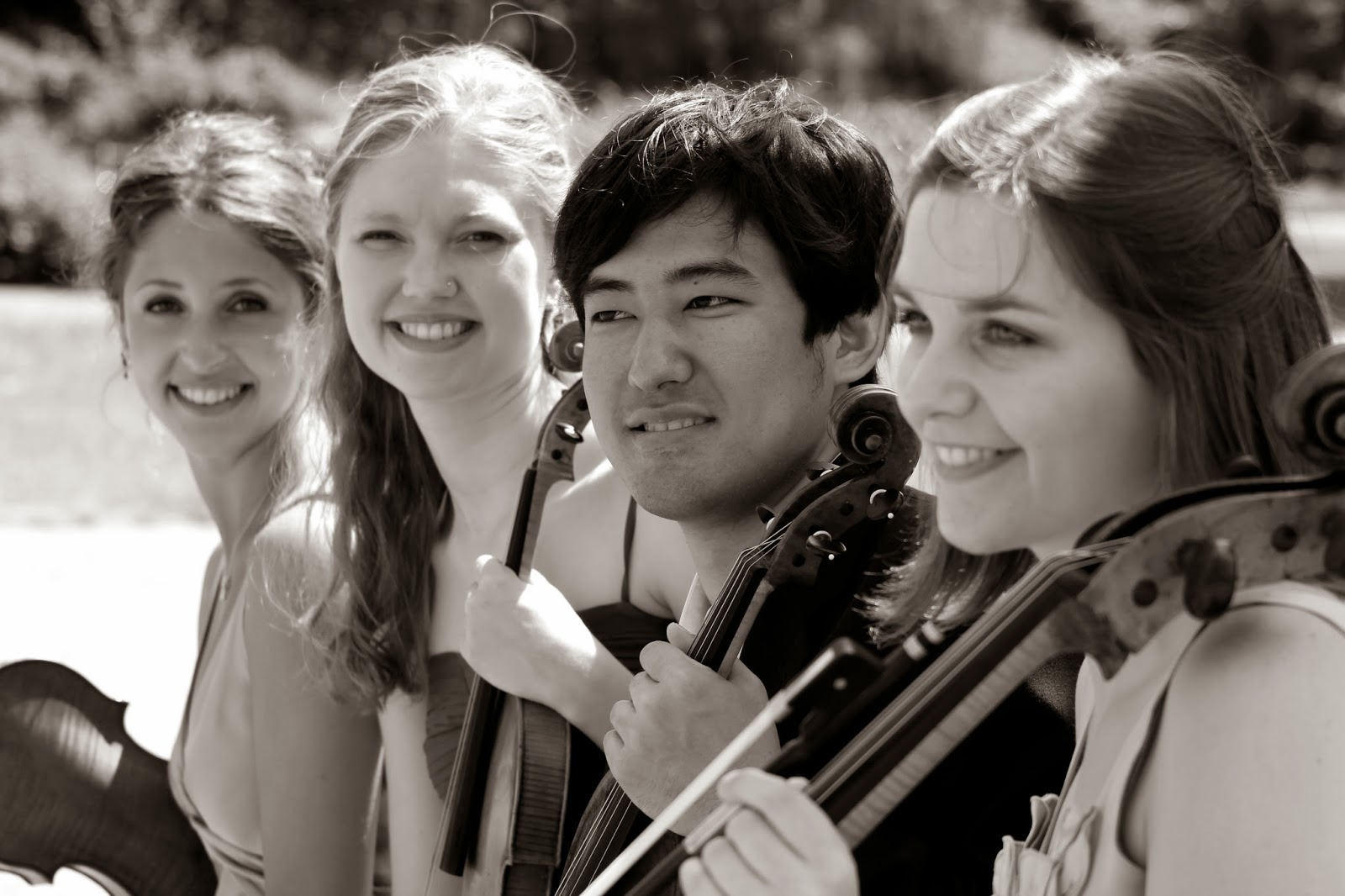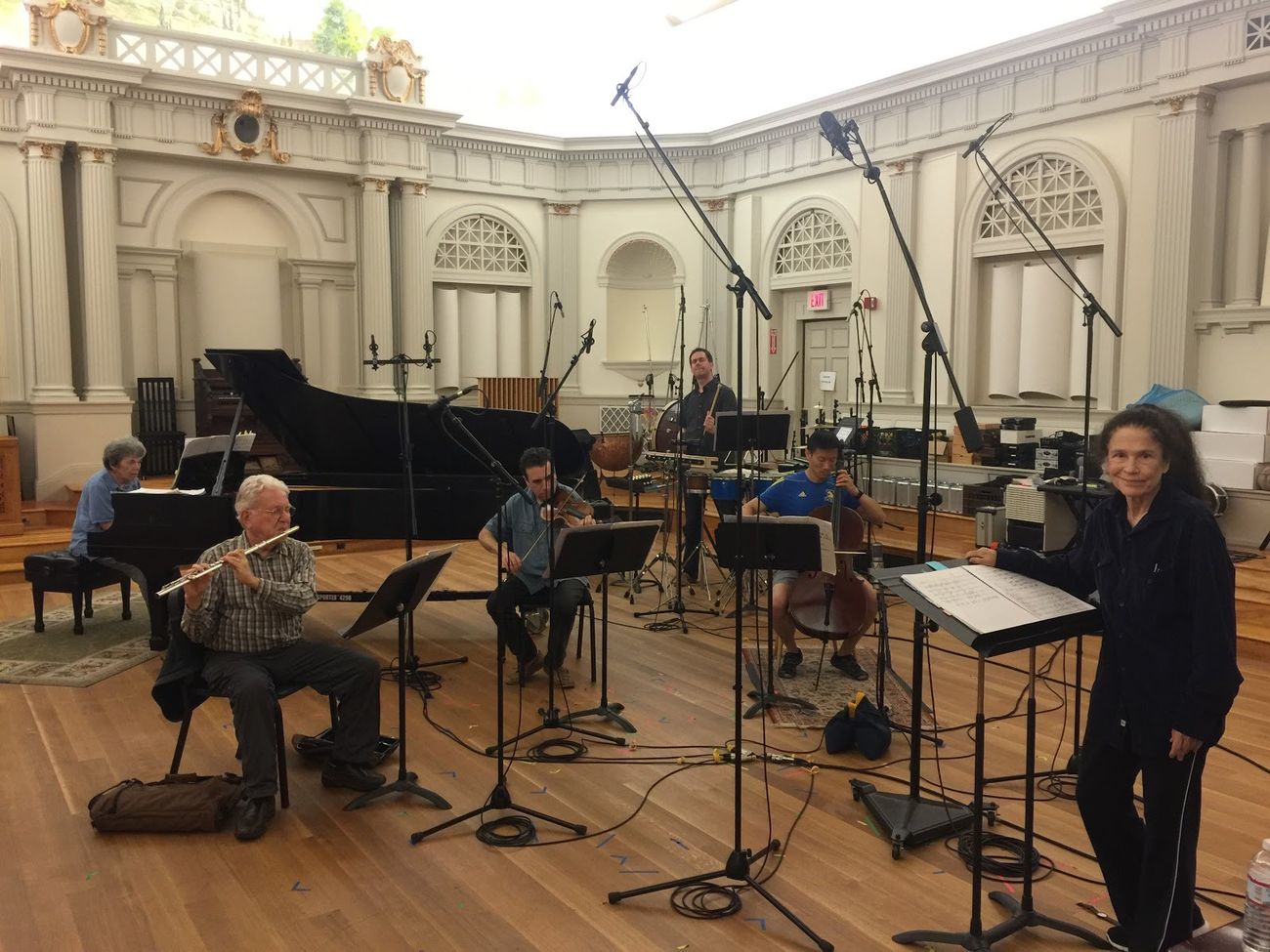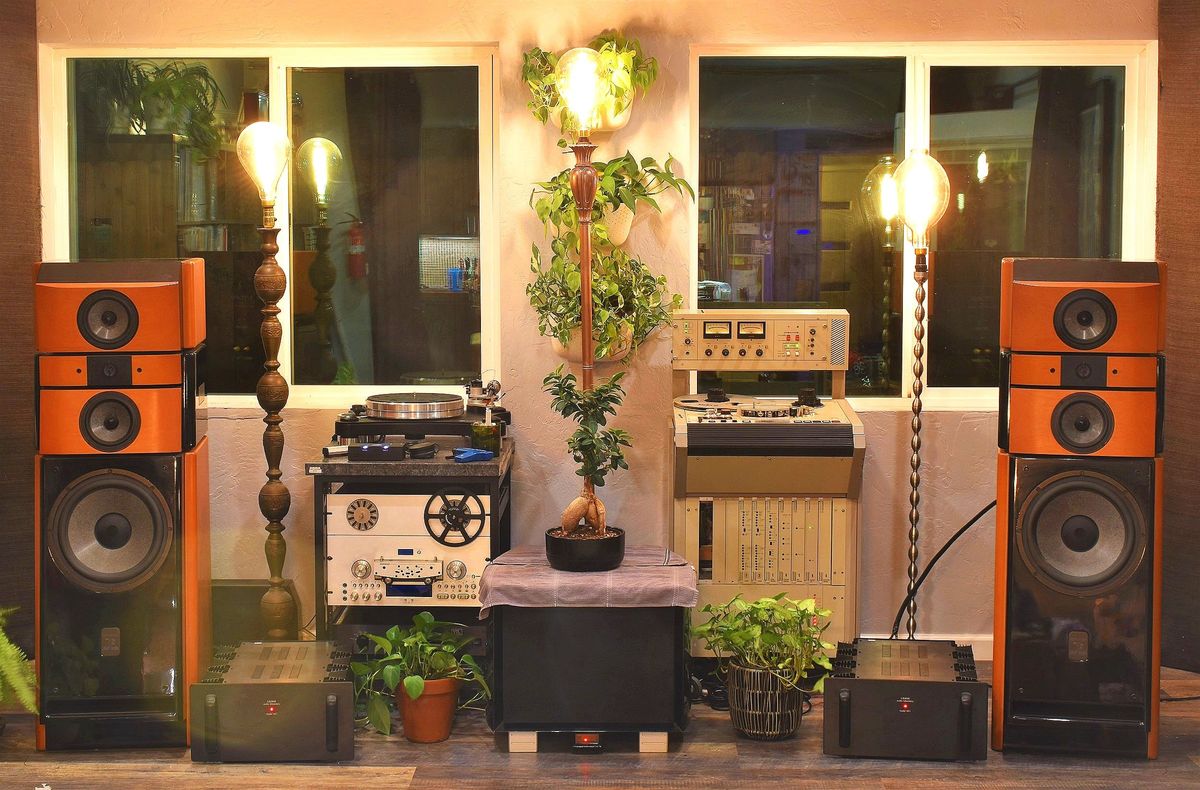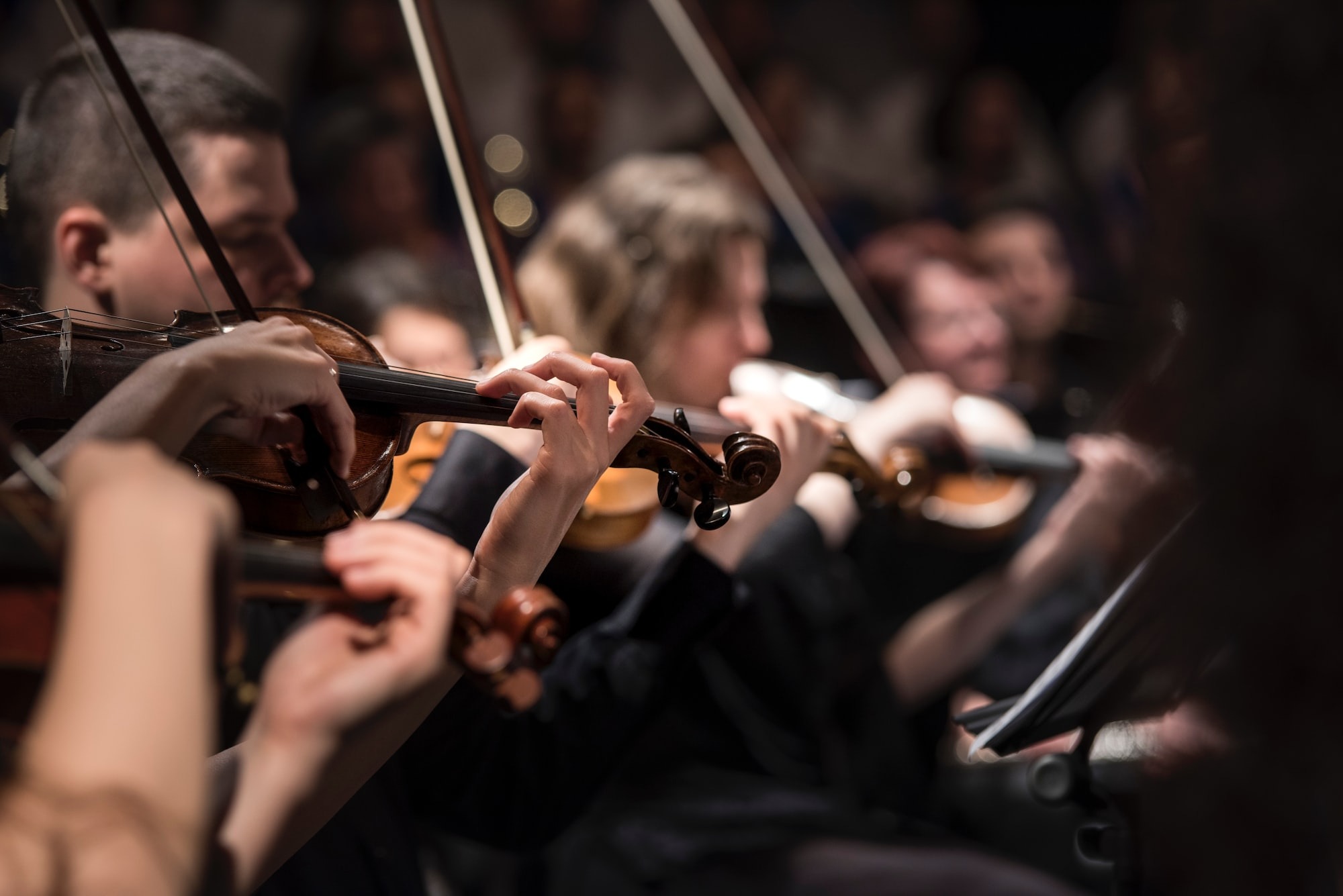Home>Events & Info>Chamber Music>How Many Musicians Are Used In Chamber Music
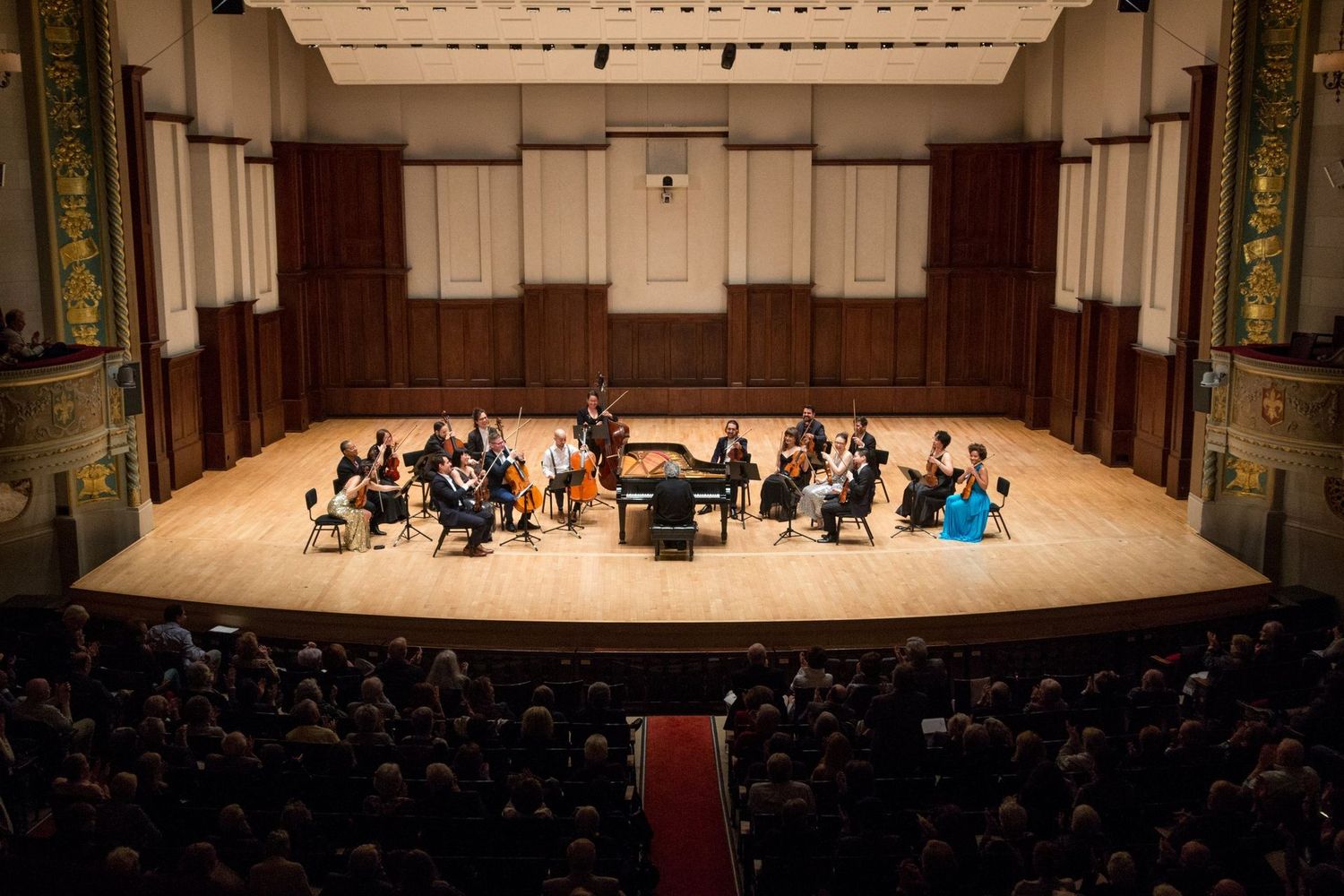

Chamber Music
How Many Musicians Are Used In Chamber Music
Modified: February 24, 2024
Discover the fascinating world of chamber music and learn about the number of musicians involved. Explore the intricate harmonies and intimate performances in this captivating genre.
(Many of the links in this article redirect to a specific reviewed product. Your purchase of these products through affiliate links helps to generate commission for AudioLover.com, at no extra cost. Learn more)
Table of Contents
Introduction
Chamber music is a genre of classical music that is characterized by its intimate and small-scale nature. Unlike orchestral music, which involves a large group of musicians, chamber music is performed by a small ensemble, typically consisting of two to nine players. This genre allows for a more intimate and collaborative musical experience, where each musician has a unique voice and contributes to the overall sound.
The term “chamber” refers to the rooms or chambers in which this type of music was originally performed. During the 17th and 18th centuries, chamber music was predominantly performed in the salons and drawing rooms of nobility and aristocracy. It was an intimate form of entertainment, often enjoyed in small gatherings among friends or patrons.
Today, chamber music continues to hold a special place in the classical music repertoire. It allows for a deeper connection between the musicians and the audience, as the performers are often in close proximity to the listeners. The small number of musicians also enables a more intricate interplay of musical ideas, providing an opportunity for intricate textures, nuanced dynamic contrasts, and expressive interpretation.
In this article, we will delve into the world of chamber music, exploring its definition, historical background, instrumentation, and the factors that influence the number of musicians used in chamber music ensembles. We will also discuss the different types of chamber ensembles and highlight some of the most famous chamber music works that have left a lasting impact on the genre.
Definition of Chamber Music
Chamber music can be defined as a genre of classical music that is performed by a small group of musicians, typically ranging from two to nine players. Unlike orchestral music, which involves a large ensemble with multiple sections, chamber music presents a more intimate and collaborative setting for musicians.
One defining characteristic of chamber music is its emphasis on the individual voices of each instrument. Rather than blending together into a homogeneous sound like in an orchestra, each instrument in a chamber ensemble maintains its distinct timbre and musical identity. This allows for intricate musical conversations and a more transparent texture.
Chamber music can be performed with a variety of instrument combinations, including strings, woodwinds, brass, and keyboards. Some popular configurations include string quartets (consisting of two violins, a viola, and a cello), piano trios (piano, violin, and cello), and woodwind quintets (flute, oboe, clarinet, bassoon, and horn). However, the possibilities for instrumentation in chamber music are virtually limitless, leading to a wide range of creative interpretations and musical possibilities.
Another notable aspect of chamber music is its focus on musical conversation and collaboration among the musicians. Unlike in an orchestral setting, where the conductor leads and directs the performance, chamber music relies on a shared responsibility among all players. Each musician must actively listen and respond to the others, creating a dynamic and interactive musical dialogue.
Furthermore, chamber music is often known for its intimate performance venues. Historically, chamber music was performed in small rooms or chambers, typically in the homes of wealthy patrons or nobility. This close proximity between the performers and the audience allows for a more direct and personal experience of the music.
Overall, chamber music offers a unique and intimate musical experience that highlights the individual voices of each instrument and promotes collaboration among musicians. It is a genre that requires both technical proficiency and a deep understanding of musical communication, making it a rich and rewarding endeavor for performers and listeners alike.
Historical Background
The origins of chamber music can be traced back to the Renaissance and Baroque periods, where music was predominantly composed for small groups of instruments or voices. However, it wasn’t until the Classical era, particularly in the 18th and early 19th centuries, that chamber music flourished and established itself as a distinct genre.
During the Classical era, chamber music gained popularity among the aristocracy and the rising middle class. It was often performed in intimate settings, such as salons, private residences, and small concert halls. Composers such as Mozart, Haydn, and Beethoven became key figures in the development of chamber music, producing numerous acclaimed compositions for smaller ensembles.
Mozart, for instance, revolutionized chamber music through his compositions for string quartet, which consists of two violins, a viola, and a cello. His String Quartet No. 19 in C Major, also known as the “Dissonance Quartet,” showcases his innovative harmonic language and intricate interplay between the four instruments.
In the 19th century, the Romantic period brought further advancements to chamber music. Composers like Schubert, Mendelssohn, and Brahms expanded the possibilities of instrumentation and introduced richer harmonies and emotional depth to the genre. The piano also emerged as a prominent instrument in chamber ensembles, leading to the popularity of piano trios and piano quartets.
Chamber music continued to evolve into the 20th century, with composers like Debussy, Ravel, and Stravinsky incorporating new harmonic languages and experimental techniques into their compositions. They pushed the boundaries of traditional chamber music and embraced a more diverse range of instruments and ensembles.
Today, chamber music remains an integral part of the classical music repertoire. It is performed in various settings, including concert halls, universities, and festivals, as well as more unconventional venues like art galleries and community spaces. The genre continues to inspire composers to create innovative and engaging works for small ensembles.
Overall, the historical development of chamber music reflects its versatility and adaptability to changing musical styles and societal contexts. From its humble beginnings in small chambers to its presence on concert stages worldwide, chamber music continues to captivate audiences and showcase the intimate and collaborative nature of this unique genre.
Instrumentation in Chamber Music
One of the defining features of chamber music is the wide range of possible instrument combinations. While there are traditional ensembles that have been popular throughout history, the genre allows for flexibility and experimentation in terms of instrumentation.
String ensembles, such as the string quartet, are among the most common forms of chamber music. A standard string quartet consists of two violins, a viola, and a cello. This combination offers a rich and balanced sound, with the capable of intricate interplay and expressive melodies. The repertoire for string quartets is extensive, with composers like Haydn, Mozart, and Beethoven having composed some of their most celebrated works in this genre.
Another popular chamber ensemble is the piano trio, which usually consists of piano, violin, and cello. The piano provides a harmonic foundation and adds a fullness to the sound, while the violin and cello bring melodic and expressive elements. Works for piano trios range from the classical works of Beethoven and Schubert to contemporary compositions by composers like Shostakovich and Ravel.
Woodwind quintets are also prevalent in chamber music. These ensembles typically include flute, oboe, clarinet, bassoon, and French horn. Each instrument contributes unique tonal colors and characteristics to create a diverse and vibrant texture. Composers like Mozart, Reicha, and Nielsen have written notable pieces for woodwind quintets.
Chamber music is not limited to these traditional ensembles, however. Composers throughout history have experimented with a variety of instrument combinations, including brass quintets, mixed ensembles with winds and strings, and even non-traditional combinations that incorporate percussion or electronic instruments.
Contemporary chamber music has witnessed the inclusion of non-western instruments and influences, expanding the scope of the genre even further. Composers have incorporated instruments such as the sitar, tabla, koto, and gamelan, creating unique fusions of sounds and cultural traditions.
The flexibility and diversity of instrumentation in chamber music allow for endless possibilities. Each combination brings a distinct character and timbral palette to the ensemble, providing composers and performers with opportunities for creative exploration and innovation.
Number of Musicians in Chamber Music
Chamber music is characterized by its small and intimate ensemble size, typically ranging from two to nine musicians. The number of musicians used in chamber music is influenced by various factors, including the desired sound, the specific composition, and the intended musical expression.
One of the most well-known forms of chamber music is the string quartet, consisting of two violins, a viola, and a cello. The four instruments blend harmoniously to create a balanced and nuanced sound. The string quartet format allows for intricate melodic interplay and the opportunity for each instrument to showcase its unique character.
However, chamber music can also be performed by duos, trios, quintets, sextets, and larger ensembles. Duets and trios offer a more intimate setting, allowing for close musical collaboration and virtuosic performances. On the other hand, larger ensembles provide a greater breadth of sound and textural possibilities.
The number of musicians in chamber music is often determined by the specific requirements of the composition being performed. Some pieces may call for a specific ensemble size, while others may offer flexibility for interpretation and experimentation.
Another influential factor in determining the number of musicians in chamber music is the venue and space in which the performance takes place. Unlike orchestral music, chamber music is often performed in smaller settings such as concert halls, intimate venues, or even private homes. The number of musicians must be considered in relation to the acoustics and the space available, ensuring that the sound is balanced and well-projected to the audience.
Moreover, the desired musical expression and the interpretation of the composer’s intent also play a significant role in determining the number of musicians in chamber music. Some compositions may require a larger ensemble to achieve a grand or powerful sound, while others may aim for a more delicate or intimate atmosphere that can be achieved with fewer musicians.
Ultimately, the number of musicians in chamber music is a dynamic and flexible aspect of the genre. It allows for a vast range of ensemble sizes and configurations, providing composers and performers with the freedom to create and explore different musical possibilities while maintaining the intimacy and collaborative spirit that define chamber music.
Factors Affecting the Number of Musicians
Several factors influence the number of musicians used in chamber music ensembles. These factors can vary depending on the specific composition, the desired musical expression, the available resources, and the creative choices of the performers. Here are some key factors that impact the decision-making process:
- Composition and Musical Intent: The choice of the number of musicians is often dictated by the requirements and intentions of the composition itself. Certain pieces may be specifically written for particular ensemble sizes, such as a string quartet or a piano trio. Composers may have a specific vision in mind, and the desired musical effect may be best achieved with a particular number of musicians.
- Artistic Interpretation: The interpretation of the music by the performers can also influence the number of musicians. Artistic choices, such as wanting a more intimate or powerful sound, can lead to adjustments in ensemble size. Performers may decide to expand or reduce the number of musicians to achieve a specific expressive effect or to highlight certain musical elements in the composition.
- Available Resources: The resources available, such as the number of skilled musicians and their availability, can also impact the ensemble size. In some cases, performers may need to adjust the number of musicians based on the availability and skill set of the musicians they have access to.
- Venue and Acoustics: The characteristics of the performance space and its acoustics can influence the number of musicians. Smaller venues or spaces with limited acoustics may require a smaller ensemble to ensure that the sound is balanced and well-projected. On the other hand, larger venues with excellent acoustics may allow for larger ensembles to create a full-bodied and immersive musical experience.
- Musical Style and Genre: The musical style and genre of the composition can also influence the choice of ensemble size. Some genres, such as Baroque chamber music, were traditionally performed with fewer musicians. Modern or contemporary compositions may be open to more experimental ensemble sizes, allowing for greater flexibility and creativity.
Overall, the decision of how many musicians to use in chamber music is a thoughtful and deliberate process. It requires considering the specific composition, musical intent, available resources, performance venue, and the performers’ artistic choices. By carefully weighing these factors, chamber musicians can create the ideal ensemble size that best serves the music and delivers the desired expressive impact.
Types of Chamber Ensembles
Chamber music encompasses a wide variety of ensemble configurations, allowing for diverse and rich musical experiences. Here are some of the most common types of chamber ensembles:
- String Quartet: Perhaps the most iconic chamber ensemble, a string quartet consists of two violins, a viola, and a cello. This ensemble is known for its balanced and nuanced sound, and it has been a popular format for chamber music throughout history. String quartets have a vast repertoire, including masterpieces by composers such as Haydn, Mozart, Beethoven, and Shostakovich.
- Piano Trio: A piano trio features piano, violin, and cello. The piano provides a rich harmonic foundation while the violin and cello contribute melodic and expressive elements. Piano trios have garnered significant attention from composers, resulting in a wide range of repertoire from classical masters like Beethoven and Schubert to contemporary composers such as Ravel and Shostakovich.
- Woodwind Quintet: This ensemble consists of flute, oboe, clarinet, bassoon, and French horn. Each member brings a unique tonal color and character to the ensemble, creating a vibrant and diverse texture. The woodwind quintet has been a popular formation since the 19th century, with notable works written by composers like Nielsen, Reicha, and Barber.
- Brass Quintet: The brass quintet is composed of two trumpets, a French horn, a trombone, and a tuba. This ensemble allows for a rich and powerful sound, showcasing the expressive capabilities of brass instruments. Brass quintets are versatile, performing a range of repertoire from Baroque works to contemporary compositions.
- Wind Quintet: The wind quintet typically includes flute, oboe, clarinet, bassoon, and French horn. This ensemble combines the unique timbres of different wind instruments to create a distinctive and expressive sound. Wind quintets are known for their versatility and have inspired compositions by composers such as Reicha, Ligeti, and Nielsen.
- Chamber Orchestra: While larger than traditional chamber ensembles, a chamber orchestra maintains the spirit of chamber music by featuring smaller section sizes and emphasizing individual voices. These ensembles are often led by a conductor and perform a wide range of repertoire, including Baroque, Classical, and contemporary works.
- Mixed Ensembles: Chamber music can also incorporate mixed ensembles that combine different families of instruments. These ensembles often include strings, woodwinds, brass, and even percussion. The combination of diverse instruments allows for a broader palette of sounds and textures, creating unique and captivating performances.
These are just a few examples of the many types of chamber ensembles. Chamber music’s flexible nature allows for a wide range of instrument combinations and ensemble sizes, encouraging creative exploration and pushing the boundaries of musical expression.
Famous Chamber Music Works
Chamber music has produced countless works that have become beloved masterpieces in the classical music canon. These compositions showcase the beauty, complexity, and intimacy of the genre. Here are just a few examples of famous chamber music works:
- String Quartet No. 14 in D minor, “Death and the Maiden” – Franz Schubert: This quartet is one of Schubert’s most renowned works. It is characterized by its powerful emotions, dramatic melodies, and intense harmonic progressions. The second movement, based on Schubert’s song “Death and the Maiden,” is particularly haunting and has become an emblematic piece of chamber music.
- Piano Trio No. 1 in D minor, Op. 49 – Felix Mendelssohn: Mendelssohn’s piano trio is a staple of the chamber music repertoire. The work displays a perfect balance between the piano, violin, and cello, with moments of tender lyricism and energetic virtuosity. The enchanting melodies and vibrant interplay make this trio a perennial favorite.
- Clarinet Quintet in A major, K. 581 – Wolfgang Amadeus Mozart: Mozart’s clarinet quintet is a delightful and elegant chamber work. Composed for clarinet, two violins, viola, and cello, this piece beautifully showcases the expressive abilities of the clarinet. The interplay between the solo clarinet and the string quartet creates a dialogue of rich textures and melodic charm.
- Octet in E-flat major, Op. 20 – Felix Mendelssohn: Mendelssohn’s octet is a remarkable composition, written when the composer was just 16 years old. This work is known for its youthful energy, sparkling melodies, and intricate counterpoint. With a unique combination of strings and winds, the octet demonstrates Mendelssohn’s mastery of chamber music composition.
- Quintet for Piano and Strings in F minor, Op. 34 – Johannes Brahms: Brahms’ piano quintet is a monumental work that showcases the grandeur and virtuosity of both the piano and the string instruments. It features a rich tapestry of melodies, powerful harmonies, and intricate interplay between the instruments. Considered one of Brahms’ greatest compositions, this quintet is a testament to the emotional depth and complexity of chamber music.
While these works represent just a fraction of the vast chamber music repertoire, they exemplify the depth and diversity of the genre. Each composition offers a unique musical journey, taking listeners on an emotional and artistic exploration. Chamber music continues to inspire and captivate audiences with its ability to convey profound emotions and create intimate musical connections.
Conclusion
Chamber music, with its intimate ensemble sizes and collaborative nature, holds a special place in the world of classical music. The genre has a diverse and rich history, evolving from its origins in small chambers to becoming a mainstay in concert halls and venues worldwide.
Defined by its small-scale and nuanced performances, chamber music allows for a deep connection between musicians and listeners. The unique interplay between instruments and the emphasis on individual voices create a vibrant and intimate musical experience.
Throughout history, chamber music has been composed for a variety of instrument combinations, from string quartets to woodwind quintets and everything in between. The flexibility of ensemble sizes and configurations enables composers and performers to explore a vast range of musical possibilities.
Famous chamber music works, such as Schubert’s “Death and the Maiden” quartet and Mendelssohn’s piano trio, have become icons of the genre, captivating audiences with their emotional depth and expressive qualities.
As we continue to embrace chamber music, it remains an essential part of the classical music repertoire. It offers a unique platform for collaboration, artistic expression, and individual excellence, while fostering a sense of intimacy and musical conversation.
Whether performed in a grand concert hall or an intimate salon, chamber music brings people together through shared experiences and the beauty of music. It is a genre that transcends time and cultural boundaries, touching the hearts and souls of audiences worldwide.
So next time you have the opportunity, immerse yourself in the enchanting world of chamber music. Allow the intertwining melodies, the delicate harmonies, and the passionate performances to transport you to a realm of artistic beauty and profound musical connection.

